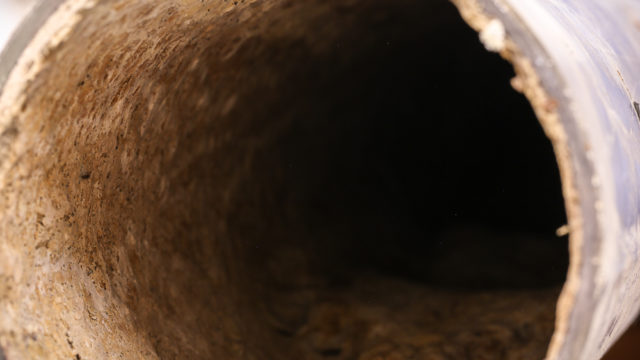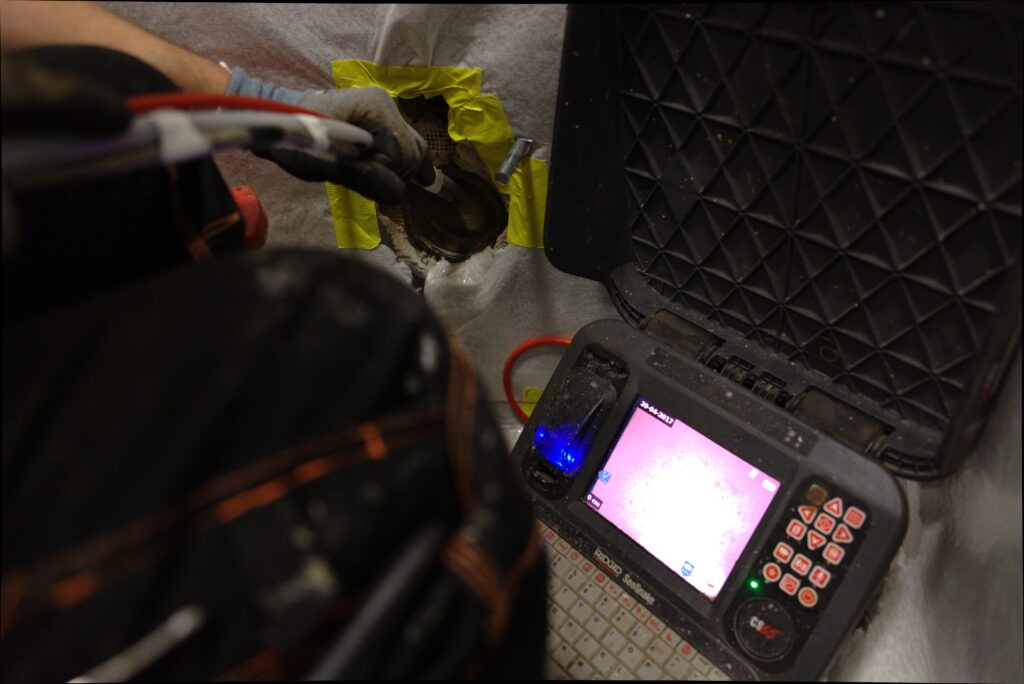VERFAHREN
Das Rohr-in-Rohr-Verfahren vor der Sanierung
Ein sicheres, hochwertiges und umweltschonendes Verfahren
Ist Ihre Abwasserleitung, egal ob aus Kunststoff, Eternit, Gusseisen, Edelstahl oder Kupfer, undicht oder in die Jahre gekommen? Mit unserem hochwertigen und umweltschonenden Verfahren können wir Ihnen weiterhelfen. Das Rohr-in-Rohr-Verfahren haben wir schon in über tausend Leitungen erfolgreich eingesetzt. Täglich wenden wir diese innovative Sanierungstechnik in der ganzen Schweiz erfolgreich an.
Fixe Kosten und klare Planungsgrundlagen
Die Kosten bei dieser innovativen Sanierungstechnik (Rohr-in-Rohr-Verfahren) lassen sich dank vorhandener Erfahrungswerte sehr genau kalkulieren, ebenso wie die Sanierungsdauer. Mithilfe dieser Technologie können wir im Gegensatz zum Komplettaustausch der Rohrleitungen bis zu 2/3 des Zeitaufwands einsparen.


Das Rohr-in-Rohr-Verfahren während der Sanierung
This innovative process allows for spot repairs of damage. Using our method, it is (usually) unnecessary to sharpen or expose walls and ceilings, nor to completely replace the pipes. Pipe rehabilitation is only carried out on existing plumbing fixtures. This means there are no additional costs for painters, plasterers, or tilers. Furthermore, thanks to the rapid drying time, the pipe rehabilitation work can be completed in a single operation within a single day. This means the sewer network can be quickly put back into operation after rehabilitation. Furthermore, not all water pipes need to be shut down at the same time, as the work is usually carried out in sections.
Umweltschonendes Verfahren
The new standalone pipe contains no solvents, styrene or carcinogens and is therefore environmentally and user friendly.
Das Rohr-in-Rohr-Verfahren nach der Sanierung
After the renovation, the customer has a new plastic pipeline. The new, self-contained pipe is extremely durable and can withstand pressure as well as chemical substances and mixtures—such as cleaning agents or hot grease mixtures. It is also extremely resistant to temperature fluctuations and exhibits high impact strength at low temperatures. Its elasticity prevents new brittleness, cracks, and stresses that can occur due to thermal expansion or other mechanical stresses.

